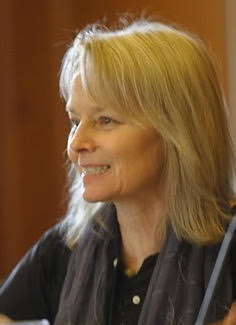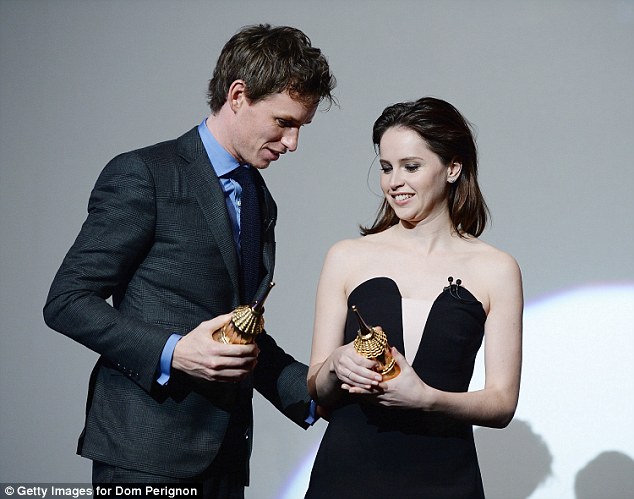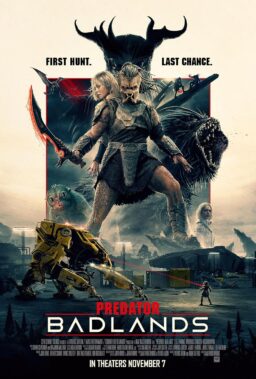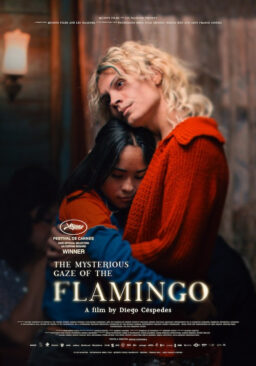As the
Santa Barbara International Film Festival moved into its first weekend, one
thing became clear: everyone loves Santa Barbara. Living here, I’m accustomed
to that sentiment, yet now I’m overhearing it while in line for festival films.
Canadians here each year for the festival, visitors from the Midwest, folks
driving the 75 miles north from Los Angeles—they say it.
“I love
Santa Barbara!” That’s how Eddie Redmayne greeted the audience of 2000 gathered
to honor him and Felicity Jones as the co-stars of “The Theory of Everything”
on Wednesday evening. “Felicity and I have both had the pleasure of being here
at festivals before and we just love it.” With what appears to be a lock on the
Oscar for Best Actor, Redmayne charmed the crowd with a winningness matched by
Jones, and by, yes, their matchless freshness of youth. Presenting them with
SBIFF’s Cinema Vanguard Award, the film’s screenwriter/producer Andrew McCarten
(nominated for Best Adapted Screenplay and Best Picture) said, “These two have
a combined age of 35, although I might be exaggerating…a little.”

Each of
them, beyond the undeniable talent, has that “something,” whatever it is. In
Eddie, it’s a boyishness that gets women of all ages, the younger ones for the
obvious, the older ones perhaps imagining daughters who’d bring him home as the
perfect beau? In Felicity, it seems to start with that overbite, which gets men
every time. She’s girlish but also sexy, a killer combination.
Scott
Feinberg of The Hollywood Reporter, an SBIFF regular, is both gracious and
very knowledgeable, and always does a fine job drawing out younger artists;
with Redmayne and Jones, he did it again. Interspersed with clips from
“Theory,” as well as other films they’ve done individually (including “My Week
with Marilyn” for Redmayne, and the Ralph Fiennes-directed “The Invisible
Woman” for Jones), a three-way conversation happened easily. Redmayne allowed
that he’ll “go after” parts he wants, joking that he likely won his role in
“The Good Shepherd,” playing Angelina Jolie’s son, because he “had a big
mouth,” and got to play Julianne Moore’s son in “Savage Grace” because he “had
freckles.” The audience laughed, savvy enough to know there was a bit more to it
than that.
Jones
and Redmayne had known each other for some years, doing theater and even
auditioning for a film together, but without getting the parts. Jones admitted
that when she learned about “Theory,” she texted Redmayne, reminding him of
that joint audition. Eventually, there were three actresses up for the
co-starring role of Jane Hawking. But once she auditioned, doing that very
challenging last scene of the movie with Eddie Redmayne, there was no question:
the magic between them was unmistakable. Felicity Jones got the part, and an
Oscar nomination for Best Actress.

Loving
Santa Barbara also means many filmmakers make their homes (or second homes)
here. Two of those families were honored this week at the festival. Jacques
Cousteau is a name recognized by anyone who can remember the groundbreaking
series, “The Undersea World of Jacques Cousteau.” From childhood, son
Jean-Michel accompanied his father on lots of underwater explorations,
continuing over four decades in that scientific work through his Ocean Futures Society which is based in
Santa Barbara.
With his
children Fabien and Celine, Jean-Michel, now 75, was presented with SBIFF’s
David Attenborough Award for Excellence in Nature Filmmaking. Prior to the Q&A, the Arlington Theater audience watched the brand new “Secret Ocean
3D,” the Cousteaus’ first venture into Large Format cinema. With a couple
thousand people donning 3D glasses, the documentary, narrated by the great
oceanographer Dr. Sylvia Earle, took us quickly underwater, where we shared the
experience of Jean-Michel and another diver as they observed and commented on
life at ocean bottom. The camera work by Gavin McKinney is extraordinary,
allowing one to actually see inside the mouths of large fish as they open wide,
and to view the behaviors of living creatures we might have assumed before to
be inanimate. Perhaps most remarkable is the sense that the two diver-explorers
appear very much like sea-life themselves, swimming along with the other
creatures.
Jean-Michel explained, “What I was drawn to…is that by
using new digital macro and slow motion 3D technology, we are able to go one
step further in the discovery of the ocean in a way that my father could only
have imagined. Even after 69 years of diving, I was blown away by the
spectacular images we captured, as I discovered an entirely new world sometimes
too small to be seen by the naked eye. My mission for decades has been to
educate future generations so that they understand, fall in love with and
protect the ocean.”
“Secret Ocean
3D” succeeds in bringing we earthbound creatures much closer to the ocean.
And the superb effects achieved using 3D (about which Roger Ebert was outspokenly
dubious but which I believe he would heartily approve here) cannot be
overstated. The remarkable Cousteau family, so very deserving of this award,
continue their pioneering work to protect this vast but threatened resource
which humans and other creatures cannot survive without.

A Santa Barbara native, the writer, producer and actor Brad
Hall has family and a home here. Hall was in SB’s schools with my cousin
Barbara Altman, who reports “he was always the funniest person in class.” At
Northwestern, he met another funny person, actor and comedienne Julia
Louis-Dreyfus, and they’ve been together and collaborating ever since. I wrote
about their charming short film, “Picture Paris,” which screened at SBIFF in
2011, and knew I’d wish to see their first documentary, “Generosity of Eye”
this year. Written and directed by Hall, the film focuses on the decision of
Julia’s prominent father, billionaire art collector William Louis-Dreyfus, to
donate proceeds from his estimable collection, which includes more than 3000
paintings, in support of one entity, the Harlem Children’s Zone.
As Julia and Brad explained to an enthusiastic audience at
the Santa Barbara Museum of Art, this decision was sudden and initially a great
surprise, leading to her desire to document the art. At first, the idea was to
“do it for the family, particularly their children” but, as often happens, the
material began to speak for itself: there was much more here. Brad recognized a
documentary in the footage. A personal documentary is a tricky form, with lots
of uncertainties about people’s feelings; after Mr. Louis-Dreyfus decided he’d
be okay being filmed, Julia had her own emotions to confront, including real
surprise as she deepened her understanding of this art she’d grown up around, realizing
that until then she really hadn’t understood her father’s deep passion for art
nor his involvement with the artists he collects.
The film delves into all of this, featuring interviews with
some of the artists, as well as wonderful shots of the collected works, and
discussion with various curators over the quality of both the art collected and
the collection as a whole. The chance to see and learn about artists such as
Alabaman Bill Traylor, a former slave, who worked in crayon very briefly, from ages
80-83, sitting on a sidewalk, before passing away, and James Castle, a deaf
Idaho farm boy who never learned to read or sign but expressed himself using
soot and tree branches, and the African-American wood and metal worker Thornton
Dial of North Carolina is a treat in itself. This leads into an interesting
discussion of whether this is “outsider art,” a term Mr. Louis-Dreyfus dislikes
intensely, particularly because it seems a disparagement of work that is much
more complex than the term suggests.
The film also features terrific shots of children studying
at the Harlem Children’s Zone and visits with its vibrant founder, noted
educator Dr. Geoffrey Canada. He describes first meeting Julia’s father who
arrived alone, eventually discovering the man—and his plan—were for real. The
plan—a foundation which will auction pieces of the collection over time, with
all proceeds going directly to the HCZ—will help keep this powerful anti-poverty,
K-thru-college graduation program, alive and hopefully expanding for many
generations.
If I have any quibbles with “Generosity of Eye,” it’s that
even more about the fascinating William Louis-Dreyfus would surely be welcome.
A question from the audience indicated this: “Could you tell us more about your
father’s background?,” as did Julia’s (paraphrased) answer: “My father and his
American-born mother were evacuated from France during the Nazi Occupation
while his father stayed behind, both to lead and fund the French Resistance.
Three days before they were evacuated, they were in a restaurant when some
Nazis came in. My father, who was just 7, stood on a table and sang ‘La
Marsellaise.’ Everybody froze. Then the Nazis, who were drunk, laughed at the
little boy and left. My father always did have big balls.”
As much as anything, that bold act of a 7-year-old captures
the essence of a man with a lifelong passion for both art and justice, helping
to explain why he, among “the one percent,” would choose to donate so much of
his wealth to a group of people whose ancestors were enslaved, which he
explains as “a shameful wrong his beloved America has still not righted.” This
is William Louis-Dreyfus’ attempt to help right that massive wrong.
Beginning February 3rd, “Generosity of Eye” can be viewed
online, free of charge, here.
That’s also where potential buyers may view the art, and learn how to contact
the collection.
I’ve seen other films, of course. Two of these are the Best
Foreign Film nominees which, like too much of the rest of the U.S., have not
otherwise shown in Santa Barbara. I loved them both but further comments are
really beside the point as these have been reviewed by our fine critics here: “Force
Majeure” and “Timbuktu”.
I’ll comment on others soon, as I close wishing I possessed
just a few of the “Olympian writing muscles” of dear Roger Ebert! As someone in
“Life Itself” attests, Roger could sit down, start in and conclude within 30 minutes—and
of course, the result would be excellent. Me, between seeing films and hearing
filmmakers (and driving and parking), I need to percolate, ruminate and sleep,
and then, just maybe…












